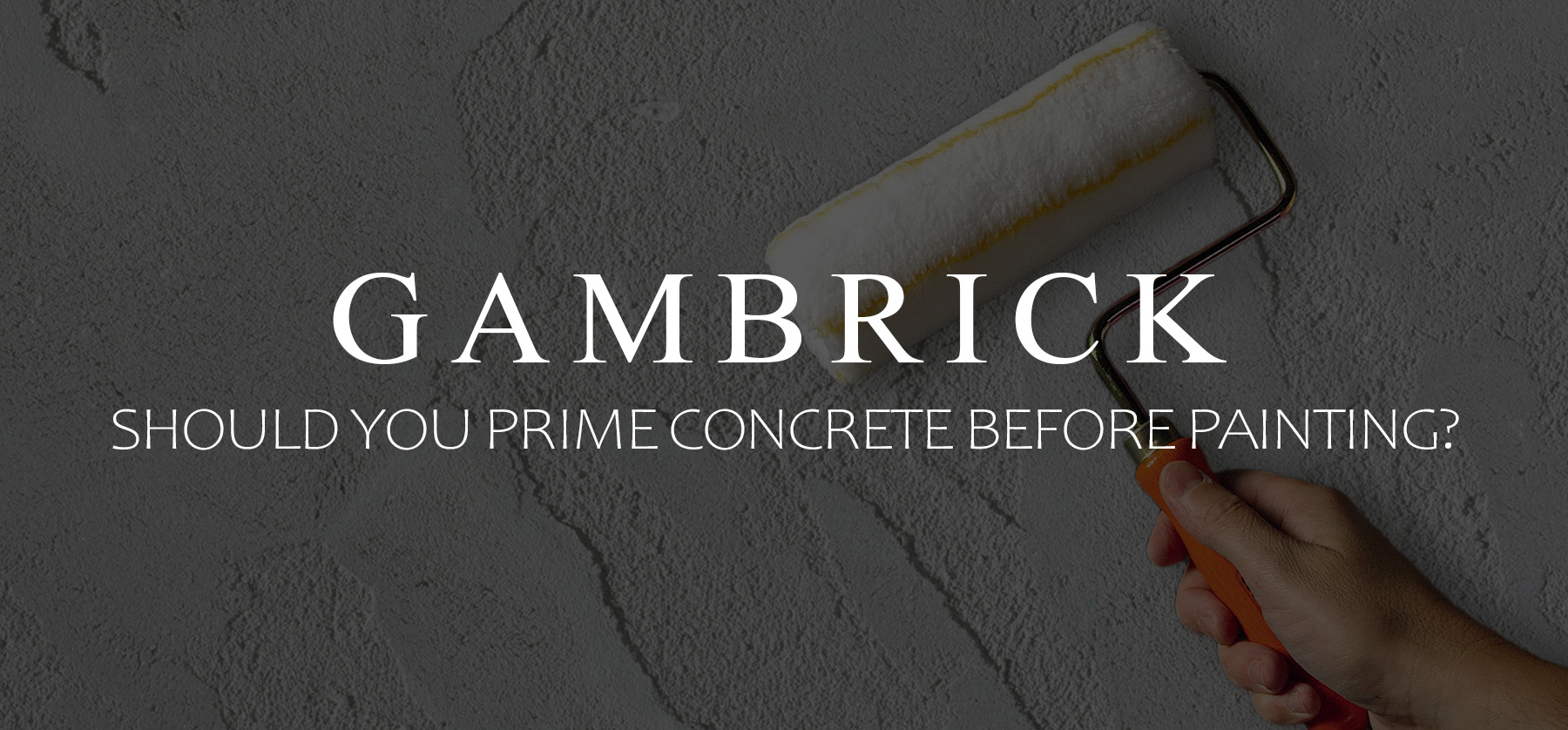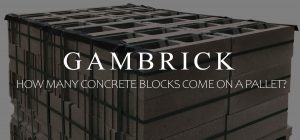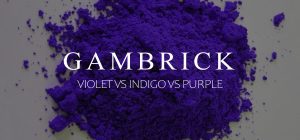
Should You Prime Concrete Before Painting?
I’ve been a mason for over 25 years and can tell you firsthand that primer is an essential first step when painting concrete or any masonry product. If you want to paint concrete like a Pro, always prime it first. Primer gives the paint a surface to adhere to and an even color to paint over. This allows your paint to last longer, look better and become chip resistant. It’s also a lot cheaper if you use primer first because less coats of paint are required, and paint is generally more expensive than primer. Primer also prolongs the life of your concrete by soaking into small pores which changes a rough surface into a smooth one.
How do you know if a concrete surface needs a primer before being painted? Generally speaking, priming before painting is so essential to a successful paint job that you should always assume the concrete needs primer first. There’s no situation I can think of where you would paint raw concrete without priming it. However, the paint you use could be slightly different. For example, I use different paint for concrete foundation walls, vs. concrete steps because steps get more wear and tear than walls.
For both exterior and interior projects, applying primer to concrete prepares the surface for paint. It fills any small gaps or pores which creates a smooth, uniform surface that’s ready for paint.
Primer soaks into cement which helps protect it from damage over time, which prolongs the life of your paint job and concrete surfaces.
Concrete is a rough surface, so in addition to needing the right primer and paint, you also need a high quality roller and tough nylon brushes that won’t get chewed up by the concrete’s gritty texture.
Why Concrete Needs Primer Before Being Painted
Concrete can produce a substance called efflorescence. It’s a white powder that can come out of concrete and other masonry product.
The technical definition of efflorescence is “a crystalline deposit of salts that can form when water is present in concrete.” Concrete has small pores that allow water to seep up from the soil below or in from the outsides. Even concrete that’s been troweled smooth still has tiny pores that moisture can penetrate.
With that waters comes minerals and residue from the concrete that create efflorescence. Water and weather conditions can affect the amount of efflorescence that concrete creates.
Efflorescence makes it hard for paint to stick to the surface of the concrete. It can also cause paint to decay and chip if a primer isn’t used. Primer fills in all these small pores and helps prevent efflorescence. Failing to use primer causes paint to decay and chip very quickly. Without primer, your coat of paint can start to chip, flake, decay or bubble in a matter of weeks.
Primer fills in all the small holes where dirt or efflorescence may have settled. It soaks into concrete which helps prevent moisture from creating mold and mildew. This is why you should always prime concrete before painting.
Primer creates an additional layer on top of the concrete that sits in between the paint and concrete. Don’t think of priming concrete as just adding a layer of paint. Think of it as adding a new surface to paint on. This is new primed surface is specially designed to be painted.
Preparing Concrete For Paint
Before priming or painting, it’s important to clean your concrete. Small pores can hold large amounts of dirt, oil and debris. All of which make the surface hard for paint and primer to adhere to. And if you don’t clean the concrete first, your primer coat will lock all of that dirt and oil in. Over time the oils can start to degrade the primer and paint from the inside. So make sure the surface is really clean before priming.
There are several good ways to clean concrete and get it ready for painting.
A pressure washer, concrete cleaner, scraper, scrub brush and plain old soap and warm water are all good things to have when cleaning concrete. Scrub out any efflorescence, dirt, oil, and other debris that have built up over time.
Popular chemical cleaners used for concrete is contain a chemical called trisodium phosphate. They work fine but I prefer the more natural approach of soap and water. Unless a surface really needs it, I try not to use chemical cleaners.
Scrub the concrete with a brush and your cleanser of choice. You can scrub hard on most concrete surfaces unless they’re old and brittle.
Pressure washer rinses are great at cleaning concrete. Vary the pressure based on the condition of the concrete.
If there is old paint you can use the scraper to get any lose sections off. Try to get down to bare concrete as much as possible. This will give you a smoother painted finish and less chance for future chips.
Repair Concrete Before Priming
You should always repair the concrete surface before priming or painting.
Smooth off concrete that’s rough and bumpy with an angle grinder. Use the grinder and a masonry blade to smooth out any rough spots in your concrete. The smoother the surface the better it’ll hold paint and primer and the less the job will cost. A rough surface will require more primer and paint so smooth things out as much as possible.
In addition to grinding, smoothing and cleaning your concrete, if there are cracks or crevices you should repair them before priming. Mix some repair cement or concrete and fill in any large gaps.
Brittle areas should be removed and filled in. You don;t want your freshly painted concrete to start breaking apart.
Types Of Concrete Primers
There are a few different products we use to prime concrete before painting.
Primers are made in three ways: alkyd/oil base, acrylic/latex, and tinted shellac. They are typically formulated for both exterior and interior applications. If you’re on a tight budget you can buy a universal primer that’s formulated to work on almost any surface. But if you want the best paint job then I recommend buying a primer made specifically for concrete. They cost more money but the outcome is better.
Concrete Primers
Acrylic/Latex:Because concrete is porous, a water based or acrylic primer is more likely to soak into the concrete than an oil based primer. This creates a bond to the substrate which allows paint to grip the surface a little better. Better grip means less chipping and flaking in the future. These primers also help reduce dust buildup on interior concrete.
Polyurethane/Epoxy:A type of acrylic/latex primer, these products are not only incredibly strong and heavy-duty, they can be made to resist chemical and harsh work environments in commercial or industrial work areas. We don’t use these much in residential work.
Acrylic Masonry:Specifically designed to protect against lime burn, discoloration, and efflorescence, masonry primers are used on properly cured, unpainted or new concrete. These are great for outdoor applications, too. This is the go to choice for when I prime concrete. I like the benefit of a primer that’s been specifically designed to work on concrete if that’s what I’m priming.
Acrylic Block Fill:If you’re working with cinder blocks, this primer is specially formulated for new or unpainted, smooth, or split face concrete blocks. This is another primer I use a lot and recommend. I like specialty primers that are designed to prime what I’m working on, so when I paint a new block wall, this is what I prime it with. But keep in mind that this is for bare block. If your block has a cement parge coat then use something else.
Each of these primers absorbs well into the concrete and is resistant to chippings and other blemishes. Some are thinner and better for indoors and some are better for outdoor use. There are other options out there like Masonry Bonding Primer but these are the most common.
A Few Tips
Here are a few tips that may prove helpful if you’ve never primed or painted concrete before.
- I recommend you seal as well as prime indoor concrete. Sealing the concrete helps prevent water from coming through. Primer seals too but I like a little more protection against water. I also like using specialty products and sealants are specifically designed to stop moisture.
- When your ready to paint,make sure to use a good concrete paint. Just because you’ve primed the surface doesn’t mean you can use any paint you want. Buy paint that’s specifically for use on masonry products. This type of paint is thicker and has the ability to expand and contract with the concrete over time. If you use standard paint that can’t move then it’ll crack.
- Mix your primer and paint thoroughly before applying for less streaks and an even distribution of color and sealants.
- Make sure to get good coverage with your primer coat. When complete, you shouldn’t see any of the under color showing through the primer.
- Roll your primer on for larger areas but use a brush to get into small cracks and pores the roller can’t penetrate.
Always prime concrete before painting. Priming provides the perfect surface for paint to stick to and makes the best final product. Everyone is always in a rush and wants to use 2 in 1 paints but they’re not great for concrete. Take your time and apply a primer coat all by itself and then your paint.
Choosing The Best Roller For Priming Concrete
The best paint rollers for priming concrete have at least a 1/2 to 1 inch thick nap and are between 4 to 18 inches long. Nap is the thickness of the roller cover that gets covered in paint. Different thicknesses work better on different surface types. In general you should always use a thicker nap for a rougher surface.
Concrete is a very rough and porous material that comes in different types. Some is very dense and smooth while other types are rougher and gritty. It’s very important to prime concrete before painting. But to do it properly you need the right equipment.
Before you select a paint roller you should examine the concrete carefully and determine how rough it is. Thicker nap rollers hold more paint and primer which helps get it into all the concrete’s cracks and crevices. But if your concrete is smooth you can use a roller with a smaller nap.
Paint roller frames come in two common sizes, 4 inches and 9 inches. Another option is a paint roller with a larger frame, or yoke. These are commonly 18 inches in width and are primarily for commercial use. They cost more, but you can get your walls painted in a lot less time.
Paint rollers are a great way to quickly apply paint to large areas while also achieving thorough and even coverage. But not all rollers are created equal.
Using a roller with the right size nap for your wall is very important if you want good coverage. But you also need a roller that’s good quality and can withstand repeatedly rolling over the gritty texture of concrete.
To learn more about choosing the best roller for painting concrete, check out our post The Best Paint Rollers For Concrete.
Summary: Should You Prime Concrete Before Painting?
I’ve been a mason for over 25 years and can tell you firsthand that primer is an essential first step when painting concrete or any masonry product. If you want to paint concrete like a Pro, always prime it first. Primer gives the paint a surface to adhere to and an even color to paint over. This allows your paint to last longer, look better and become chip resistant. It’s also a lot cheaper if you use primer first because less coats of paint are required, and paint is generally more expensive than primer. Primer also prolongs the life of your concrete by soaking into small pores which changes a rough surface into a smooth one.
How do you know if a concrete surface needs a primer before being painted? Generally speaking, priming before painting is so essential to a successful paint job that you should always assume the concrete needs primer first. There’s no situation I can think of where you would paint raw concrete without priming it. However, the paint you use could be slightly different. For example, I use different paint for concrete foundation walls, vs. concrete steps because steps get more wear and tear than walls.
For both exterior and interior projects, applying primer to concrete prepares the surface for paint. It fills any small gaps or pores which creates a smooth, uniform surface that’s ready for paint.
Primer soaks into cement which helps protect it from damage over time, which prolongs the life of your paint job and concrete surfaces.
If you have any questions or comments email us any time.

John Mazzuca | About | More Posts |
Custom Home Builder
John Mazzuca is a custom home designer and builder at Gambrick with over 25 years experience in the construction industry. John has designed, built and/or remodeled hundreds of homes, small buildings, and commercial projects. He writes about business, real estate, home building, and household electronics. His work has been featured in Fox Business, Better Homes & Garden, House Beautiful, and more.

John Mazzuca | About | More Posts |
Custom Home Builder
John Mazzuca is a custom home designer and builder at Gambrick with over 25 years experience in the construction industry. John has designed, built and/or remodeled hundreds of homes, small buildings, and commercial projects. He writes about business, real estate, home building, and household electronics. His work has been featured in Fox Business, Better Homes & Garden, House Beautiful, and more.




















